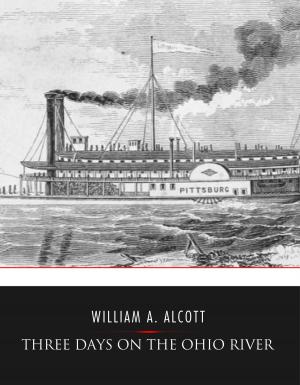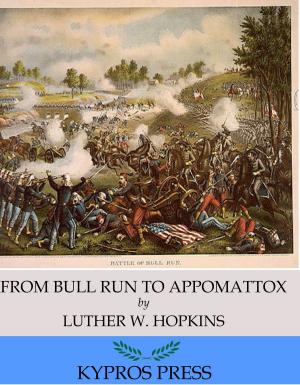| Author: | B. Perez Galdos | ISBN: | 9781508000556 |
| Publisher: | Charles River Editors | Publication: | March 22, 2018 |
| Imprint: | Charles River Editors | Language: | English |
| Author: | B. Perez Galdos |
| ISBN: | 9781508000556 |
| Publisher: | Charles River Editors |
| Publication: | March 22, 2018 |
| Imprint: | Charles River Editors |
| Language: | English |
This is a concise but comprehensive account of the famous Battle of Trafalgar written by a participant who fought there. Over the course of its history, England has engaged in an uncountable number of battles, but a select few have been celebrated like the Battle of Trafalgar, one of the most important naval battles in history. Before the battle, Napoleon still harbored dreams of sailing an invasion force across the English Channel and subduing England, but that would be dashed on October 21, 1805 by a British fleet that was outnumbered and outgunned.
That morning, Admiral Horatio Nelson’s fleet, 27 strong, bore down on the Franco-Spanish fleet, approaching at right angles in two columns. French Admiral Pierre-Charles Villeneuve’s disposition was conventional - a single line of battle, ill formed due to the very light winds and the poor seamanship of many of the crews. Traditional naval warfare strategies called for approaching an enemy fleet in one line and then creating a parallel line that allowed as many guns as possible to fire. At the same time, that kind of line of battle allowed for admirals to signal during battle, and it made retreating in an orderly fashion easier. After all, if an enemy’s ships pursued during a retreat, they would break their own line. The problem with that strategy as Nelson saw it is that the ability to retreat meant fighting a decisive naval battle would be made much more difficult. Thus, at Trafalgar he employed a completely innovative strategy. The British plan was to punch straight through the enemy line with two approaching columns of ships, which would cut the Franco-Spanish fleet’s line in three, prompting the melee that they knew would capitalize on their tactical superiority.
By the time the Battle of Trafalgar was finished, Nelson had scored arguably the most decisive victory in the history of naval warfare. The British took 22 vessels of the Franco-Spanish fleet and lost none, but as fate would have it, the man most responsible for the victory in one of history’s most famous naval battles did not get to enjoy his crowning experience. Nelson’s tactics were bold and innovative, but they also unquestionably exposed the advancing column to merciless fire during the approach, especially the Victory, which was naturally at the head of the advance. Around 1:00, the Victory herself was locked in combat with the French ship Redoutable when a sniper on the French ship’s mizzentop took aim at Nelson from about 50 feet away. From such a distance, Nelson was an unquestionably conspicuous target, since he was impeccably dressed in his finest military attire. It was a habit that had caused great consternation before among his men, who had asked that he cover the stars on his uniform so that enemies wouldn’t recognize his rank. Nevertheless, Nelson insisted on wearing them, famously countering, “In honour I gained them, and in honour I will die with them.”
The impact of Trafalgar cannot be overstated, as it literally set the stage for the rest of the Napoleonic Era. Unable to invade England, Napoleon was limited to conducting war on the European continent, and while he spent the better part of a decade frustrating the British and their allies, he was eventually undone at Leipzig and then Waterloo nearly a decade after Nelson’s victory at Trafalgar.
This is a concise but comprehensive account of the famous Battle of Trafalgar written by a participant who fought there. Over the course of its history, England has engaged in an uncountable number of battles, but a select few have been celebrated like the Battle of Trafalgar, one of the most important naval battles in history. Before the battle, Napoleon still harbored dreams of sailing an invasion force across the English Channel and subduing England, but that would be dashed on October 21, 1805 by a British fleet that was outnumbered and outgunned.
That morning, Admiral Horatio Nelson’s fleet, 27 strong, bore down on the Franco-Spanish fleet, approaching at right angles in two columns. French Admiral Pierre-Charles Villeneuve’s disposition was conventional - a single line of battle, ill formed due to the very light winds and the poor seamanship of many of the crews. Traditional naval warfare strategies called for approaching an enemy fleet in one line and then creating a parallel line that allowed as many guns as possible to fire. At the same time, that kind of line of battle allowed for admirals to signal during battle, and it made retreating in an orderly fashion easier. After all, if an enemy’s ships pursued during a retreat, they would break their own line. The problem with that strategy as Nelson saw it is that the ability to retreat meant fighting a decisive naval battle would be made much more difficult. Thus, at Trafalgar he employed a completely innovative strategy. The British plan was to punch straight through the enemy line with two approaching columns of ships, which would cut the Franco-Spanish fleet’s line in three, prompting the melee that they knew would capitalize on their tactical superiority.
By the time the Battle of Trafalgar was finished, Nelson had scored arguably the most decisive victory in the history of naval warfare. The British took 22 vessels of the Franco-Spanish fleet and lost none, but as fate would have it, the man most responsible for the victory in one of history’s most famous naval battles did not get to enjoy his crowning experience. Nelson’s tactics were bold and innovative, but they also unquestionably exposed the advancing column to merciless fire during the approach, especially the Victory, which was naturally at the head of the advance. Around 1:00, the Victory herself was locked in combat with the French ship Redoutable when a sniper on the French ship’s mizzentop took aim at Nelson from about 50 feet away. From such a distance, Nelson was an unquestionably conspicuous target, since he was impeccably dressed in his finest military attire. It was a habit that had caused great consternation before among his men, who had asked that he cover the stars on his uniform so that enemies wouldn’t recognize his rank. Nevertheless, Nelson insisted on wearing them, famously countering, “In honour I gained them, and in honour I will die with them.”
The impact of Trafalgar cannot be overstated, as it literally set the stage for the rest of the Napoleonic Era. Unable to invade England, Napoleon was limited to conducting war on the European continent, and while he spent the better part of a decade frustrating the British and their allies, he was eventually undone at Leipzig and then Waterloo nearly a decade after Nelson’s victory at Trafalgar.















